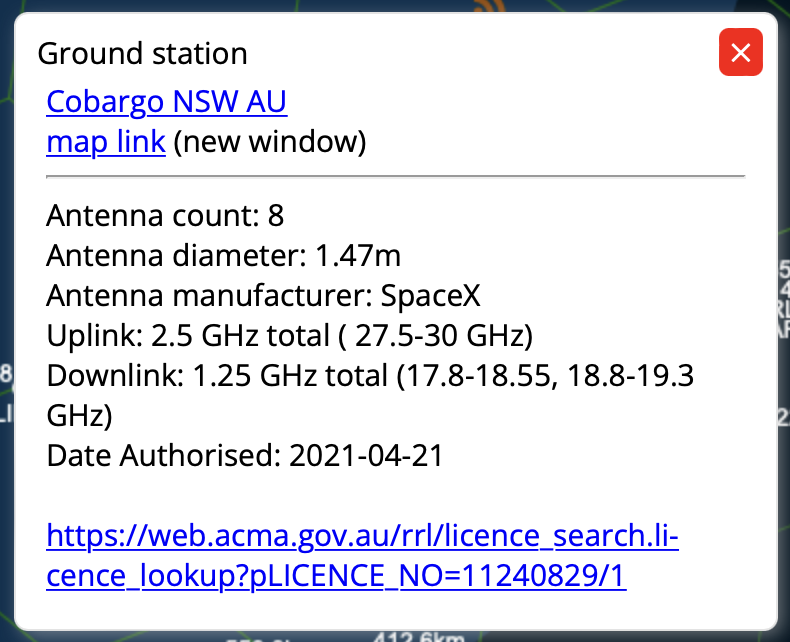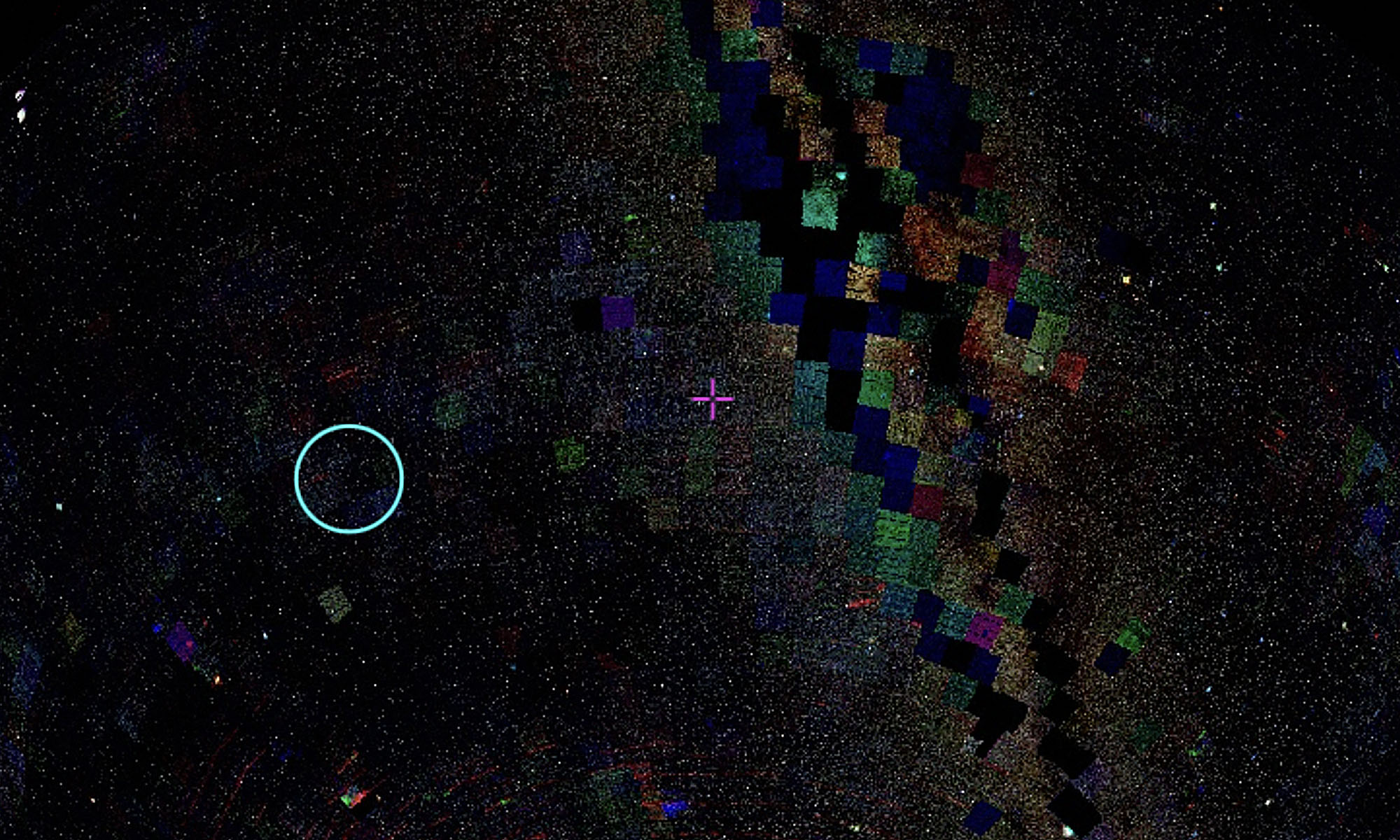While trawling https://satellitemap.space/, I came across details about and images of Starlink groundstations. Groundstations, or gateways, connect Starlink satellites to existing fibre-optic infrastructure. Borrowing this succinct explanation:
“So, a user’s home antenna connects to a Starlink satellite as it passes overhead, which in turn links them into the nearest gateway. As a result, in addition to their own antenna, users need to have a ground station within roughly 500 miles of their location to get service.”
This database includes the GPS locations, number of antennas and their diameters, manufacturer, and uplink and downlink frequencies, as well as a satellite photo of their location.

Interestingly, most (but not all) of these satellite images were taken before the ground stations were built. Searching the lat/long coordinates on Google Earth often gave a more recent satellite view, showing the ground station appearing in the landscape.
In a similar way to how the same star is recorded at different times to observe change in astronomy, satellite imagery captures the emergence of these antennas on the land.
 Broken Hill, NSW.
Broken Hill, NSW.

Ki Ki, South Australia

TeHana, New Zealand

Warren, Missouri, US
These images show the physical presence of megaconstellations in our natural and built environment, and renewed my interest in how this may impact the land and ecosystem.
This Google map plots ground stations and the areas they cover. All US gateways filed with the FCC are on the map. In other countries most likely not all gateways are shown.

In similar combinations of sources that I have been using, it uses the imagery of satellites to visualise their own proliferation.
An extra link on each of these groundstation database pages referred me to the relevant radiocommunications licence – in Australia, this is administered by the Australian Communications and Media Authority (ACMA). This led me into a huge rabbit hole of reading about radio frequency allocation, which will be my next post!
